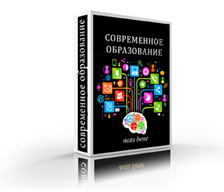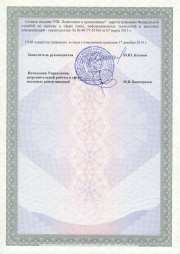MAIN PAGE
> Back to contents
Publications of Bykova Natalia Ivanovna
|
Philosophy and Culture, 2023-6
|
|
Bykova N.I. - Coloristic of the film by Bernardo Bertolucci «The Last Emperor»
|
|
pp. 89-102
|
DOI: 10.7256/2454-0757.2023.6.43442
Abstract: The subject of the study is Bernardo Bertolucci's film "The Last Emperor", in particular, the coloristic of the film and the psychology of the image of the main character, which is largely revealed through the color palette and individual artistic details. The object of research is the language of cinematography, cinematographic artistic techniques. Despite the sometimes shocking images and plots, Bertolucci's films were highly appreciated by the international community and domestic film critics due to their artistic solution and topical issues affecting the problems of class struggle and anti-fascist themes. The author of the article examines the image of the main character of the film, Aisingero Pu Yi, the last emperor of China and Manchukuo. The film is based on real historical events taking place in the first half of the 20th century, so the dramatic collisions of the character are not perceived by the viewer as some kind of abstract problem. Against the backdrop of the complex historical changes that China has faced, many questions of the formation and self-determination of the individual are being raised. The image of Emperor Pu Yi is revealed gradually through a comparison of two storylines and the color scheme of the film, since it is the color palette that helps to subtly and meaningfully convey the psychological content of the character. The main research methods are analytical and comparative-historical. The composition of the film and the dynamics of the change in the color palette of individual episodes are analyzed, which makes it possible to trace the evolution of the image. The author comes to the conclusion that it was the coloristic solution of the film that allowed the creators to convey the national color and historical atmosphere of China of a certain historical period and show a vivid image of the protagonist on the screen.

|
Philosophy and Culture, 2023-5
|
|
Bykova N.I. - Color as the meaning-forming concept of Zhang Yimou's film "Hero"
|
|
pp. 74-86
|
DOI: 10.7256/2454-0757.2023.5.40814
Abstract: The subject of the study is the color meaning in the film of the famous Chinese director Zhang Yimou "Hero", the conceptual understanding of color as the main semantic element of the artistic solution. The object of research is the techniques of visual solutions in cinema. The perception of color in the culture of different peoples differs in certain nuances and depends on many factors, including national traditions and historically established stereotypes. Films by Chinese, Korean, and Japanese filmmakers are interesting from the point of view of color solutions, as they differ in artistic originality and often offer the Russian audience an extraordinary semantic solution of the idea not only at the level of comprehension of the content, but also at the level of a specific color palette. The author similarly examines the color symbolism of Zhang Yimou's film "Hero". The conceptual content of the visual-figurative series, the originality of the coloristic solution of the film is comprehended. The scientific novelty of the article lies in the study of the color symbolism of Zhang Yimou's film "Hero" in the aspect of the correlation between the perception of the coloristic solution of the visual series and the conceptual content of the film. The author comes to the conclusion that despite the ambivalence of perception of a particular color in visual art, the coloristic solution is predetermined by the conceptual content of each episode, so color becomes the leading semantic concept of Zhang Yimou's film "Hero".

|
Bykova N.I. - On the indicators of competence achievement for the group of specialties 51.00.00 “Cultural Studies and Socio-Cultural Projects”
|
|
pp. 21-33
|
DOI: 10.25136/2409-8736.2021.3.34541
Abstract: The subject of this research is the competencies and indicators of competence achievement in the educational standards in the sphere of culture and art. The object of this research is the group of specialties 51.00.00 “Cultural Studies and Socio-Cultural Projects”, namely the federal state educational standard of higher education – Bachelor's Degree in the field 51.03.02 “Folk Art Culture”. The article reviews the competences and indicators of achieving competences in the specialty 51.03.02 “Folk Art culture”, the discipline “Management of Film, Photo, and Video Studio”. The main research method is the analysis of literature and normative legal documents, including state educational standards and basic educational curricula in the context of competency approach. The author applies the method of describing personal experience based on the practical work of the Faculty of Culture and Arts and the actual pedagogical practice of F. M. Dostoevsky Omsk State University. The scientific novelty consists in the development of indicators of general professional competencies for the indicated group of specialties. Currently, there is no uniform understanding of the indicators of competence achievement; it is on the stage of scientific discussion. The relevance for understanding competencies and their indicators is substantiated by the fact that the new federal state educational standards of higher education do not regulate this aspect, leaving the developers certain freedom on this matter. The competencies and indicators of competencies are considered on the example of the experience of the Faculty of Culture and Arts and actual pedagogical practice of F. M. Dostoevsky Omsk State University.

|
Bykova N.I. - Evolution of Expressive Means in the Art of Cinema and Problems of Film Aesthetics (the Case Study of Film Versions of Francis Fitzgerald's Novel 'The Great Gatsby')
|
|
pp. 18-32
|
DOI: 10.7256/2454-0625.2017.11.24527
Abstract: The subject of the research is the dynamics of development of expressive means in the art of cinema. The object of the research is the novel 'The Great Gatsby' by Francis Fitzerald and film versions of this novel. The author of the article focuses on the three most recent film versions of the novel by Jack Clayton (1974), Robert Markowitz (2000) and Baz Luhrmann (2013). According to the author, The Great Gatsby Novel offers an interesting approach to the concept of the American Dream. The novel does not idealize the American Dream but dispels the myth. This conceptual uncertainty attracts readers and audience. In her research Bykova pays special attention to the language of cinema that helps to reveal the images of the main heroes and symbolic message of the novel. The main research methods include comparative history and analytical methods. The comparative analysis of different cinematographic versions of the novel allows to trace back the dynamic processes that were going on in the art of cinema. For the first time in the academic literature the author analyzes artistic features of film versions of Francis Fitzerald's novel The Great Gatsby. The author also analyzes processes related to the evolution of the language of cinema and expressive means that allow to create diversified artistic images of the main heroes. The author discusses features of the composition, colour symbolism, basic montage techniques and compare them to new technologies applied to video recording and processing.

|
Philosophical Thought, 2017-4
|
|
Bykova N.I. - Detail as an artistic device in F. Kaufman's film "The Unbearable Lightness of Being" and the eponymous novel by M. Kundera
|
|
pp. 1-12
|
DOI: 10.7256/2409-8728.2017.4.22443
Abstract: The subject of this research is the detail as an artistic device. The object the novel of the modern prose writer Milan Kundera "The Unbearable Lightness of Being" and the eponymous film by F. Kaufman. The author thoroughly examines the two art components used in the book and the film – black bowler hat and mirror. The author studies the question of creation of images of the main characters through the language of fiction and language of film, as well as the means the on-screen imagery. Special attention is given to the analysis of two characters, Tomas and Sabina, whose fates are the driving force of the plot. The main methods of this study are the comparative historical and analytical. The author analyzes the conceptual aspects of artistic detail as an essential sense-making component. The scientific novelty of the article lies in examination of the artistic expression in M. Kundera’s novel "The Unbearable Lightness of Being" and F. Kaufman’s film. The article considers the spiritual-moral pursuits of the characters, as well as presents a comparative analysis of the artistic techniques that illustrate the features of the language of fiction and language of film.

|
Bykova N.I. - The game as plot-and the aesthetic phenomenon of gaming cinema
|
|
pp. 1-10
|
DOI: 10.7256/2409-8744.2017.2.22680
Abstract: The subject of the study is the game as an artistic device in modern cinema. The object of research is modern cinema art. The author examines the question of what the game is from the point of view of philosophy and art history. The study analyzes screen versions of famous works of world literature based on the game in its various manifestations. Of interest are several cinematographic works in this aspect, among them the national adaptation of F. Durrenmatt's novel "The Accident", the director V. Zhalakiavicius, and the screen version of the play "The Sleuth" by A. Shaffer.The main methods of this study are comparative-historical and analytical. A comparative analysis of the cinematographic material of different years makes it possible to trace the dynamics of changes in cinematic artistic techniques. In the study for the first time films are analyzed in which the game becomes one of the main plot-forming, aesthetic or semantic components, through the comprehension of which the understanding of the meaning of the artistic work takes place. The game is interesting as an artistic device in the film industry, since it allows to include in the space of the film a lot of cinematographic techniques that allow diversifying and improving the language of the cinema.

|
Bykova N.I. - The art of cinematography and cinema museums: world practice and contemporary problems
|
|
pp. 84-93
|
DOI: 10.7256/2409-8744.2016.6.21255
Abstract: The subject of this research is the cinema museums, while the object is the art of cinematography. The author examines the global experience in the area of creation of cinema museums, as well as studies the history of Russian Cinema Museum and prospects of its further development. Special attention is given to the modern status of cinema museums and issues associated with determination of their functions, which at the present stage remain unambiguous. The perception of the world experience in regards to this question is necessary for resolving the problem of creation and functionality of the cinema museum in Russia. The main methods of this study is the comparative-historical and analytical. The work analyzes the key concepts of outlook upon the cinema museums, as well as their sociocultural importance. The scientific novelty lies in the fact that the cultural phenomenon of the museum of cinematography art requires thorough examination. Cinema museums are located in multiple countries of the world, however, the question of what does the notion of cinema museum imply, is rather complicated due to the syncreticity of the screen arts.

|
Bykova N.I. - The Problem of Worldview and Social Adaptation in the Novel by Milan Kundera "The Unbearable Lightness of Being"
|
|
pp. 52-63
|
DOI: 10.7256/2409-8698.2016.4.21063
Abstract: The subject of study is a novel of contemporary novelist Milan Kundera "The unbearable lightness of being". The object of research is problems raised by the writer, in particular, the problem of attitude with the characters and social adaptation. The author in detail investigates the images of the main characters, especially the composition and the main ideas of the novel, allowing to understand the issues. We study the question of the relationship of the narrator, characters and author. Special attention is given to reminiscences, among them the myth of king Oedipus, the interpretation of which is important for understanding the mindset of the characters. The main methods of this study are comparative historical and analytical. Analyzes proposed by the writer of philosophical concepts and moral and ethical. Scientific novelty of the article lies in the fact that the question of the worldview of the heroes of the novel "the Unbearable lightness of being" in relation to the image of the narrator, philosophical and ethical concepts in detail not investigated. This novel is very important for understanding of creativity of M. Kundera, because, on the one hand, it marked the most important human problems associated with the choice of life, "body and soul"; on the other hand, this work is one of the most widely read in the works of the writer, because the serious problems of a philosophical worldview revealed through human values.

|






